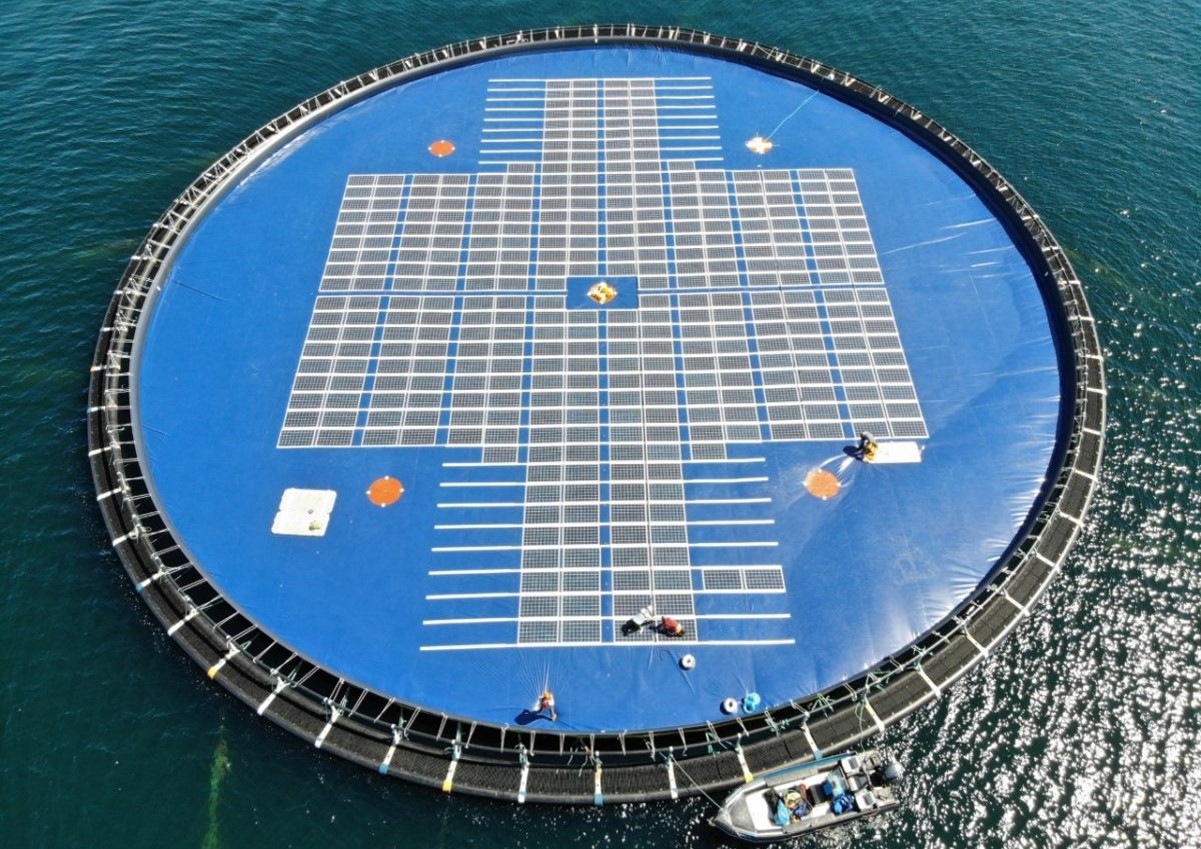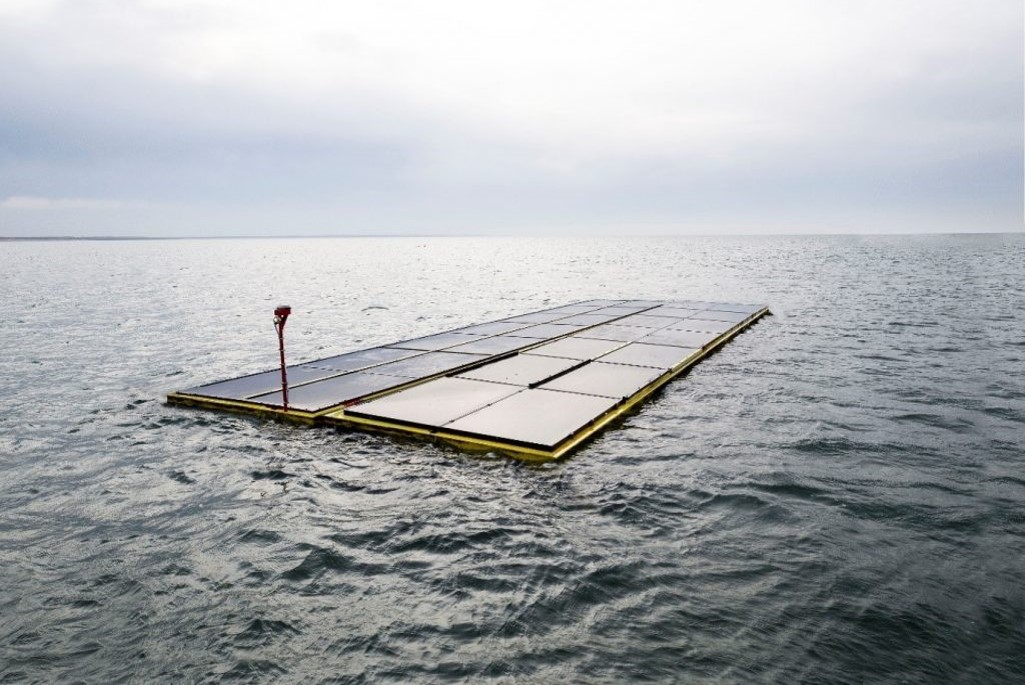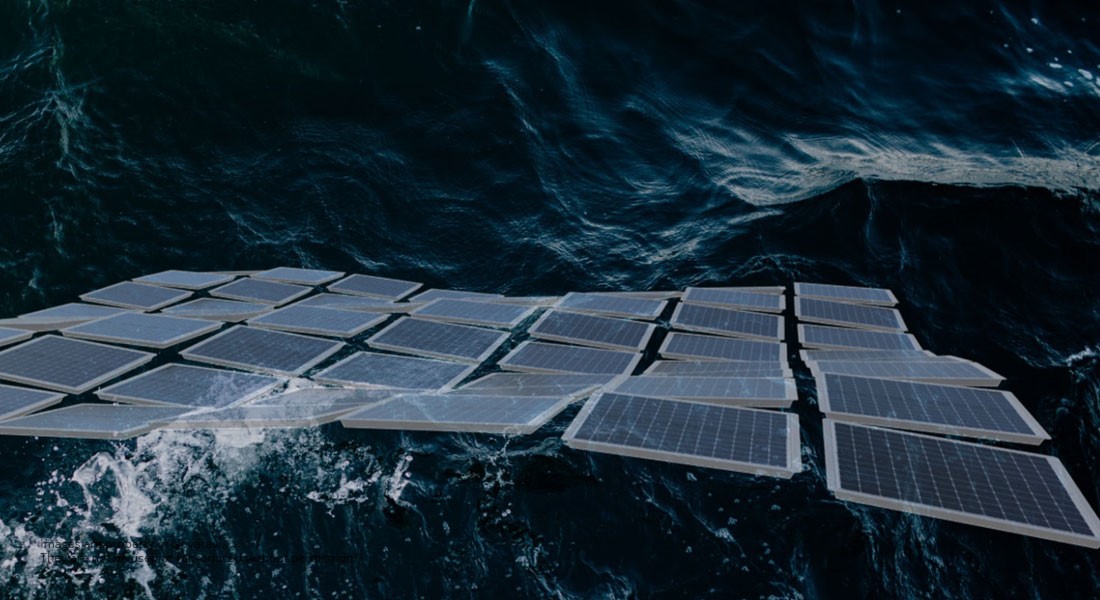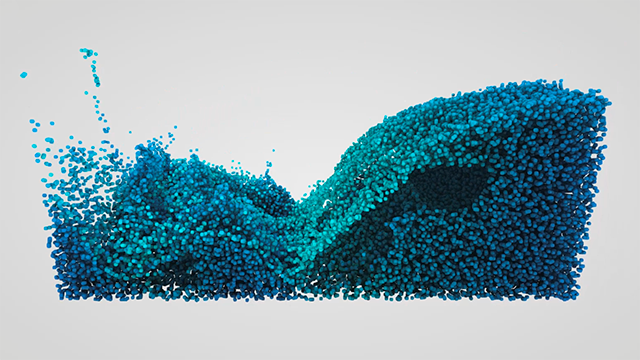Probleemstelling:
One of the key endeavors in mitigating climate change is making the energy mix more sustainable. Photovoltaic (PV) systems are well known as an almost CO2 neutral means to provide electrical energy. One drawback is that they need a lot of space, a commercially available solar panels won’t generate much more than 180 W/m² . Therefore a lot of interest goes out to offshore floating photovoltaics (OFPV), using the available area on the sea surface (see Figure 1).


Figure 1: Offshore floating photovoltaics.
Currently, several layouts are investigated to optimize the performance of the floating foundation. The most common schemes consist of either one single “island” or of inter-connected subunits. These systems should survive all kinds of weather conditions (including storms which can bring along very large waves). Therefore the interactions between the water surface and the platform of panels should be well understood, since the waves could result in rather large motions as shown in Figure 2.

Figure 2: Interaction between panel and waves.
Numerical methods are for this case often cheaper and more insightful than experiments, which is especially beneficial for early design stages. A fluid-structure interaction (FSI) simulation couples a Computational Fluid Dynamics (CFD) solver to a Computational Structure Mechanics (CSM) solver, and is a good means of investigating this interaction between a platform and water waves. Different FSI methods will be used and compared in this thesis, for different wave conditions. This will produce valuable results for research towards floating photovoltaics, that are potentially also useful for other offshore floating structures.
